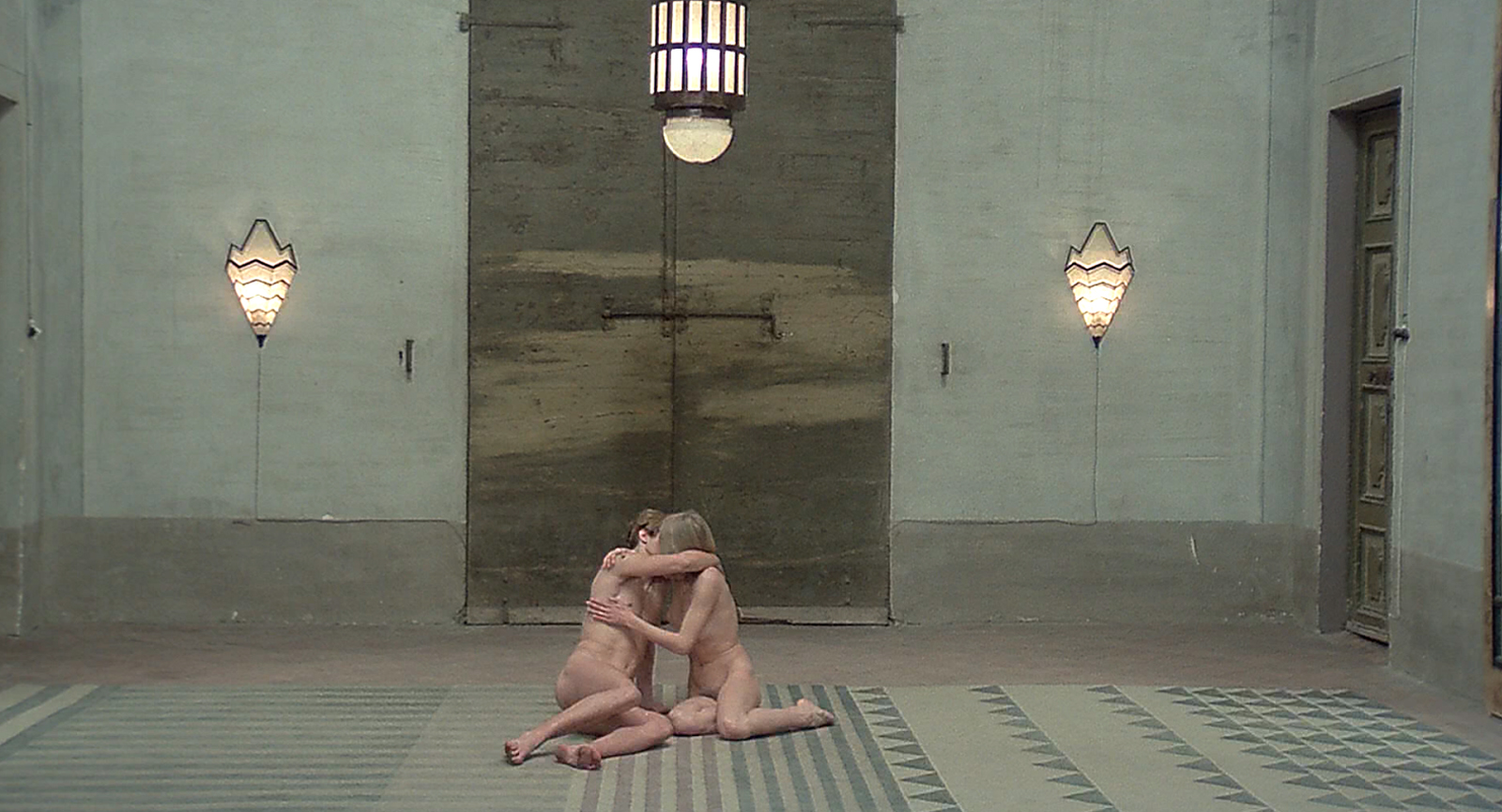I Watched It So You Don't Have To: The House That Jack Built
Once, in quoting a friend of mine, I referred to Gasper Noe as a troll, with the follow up that I loved that about him. A lot of his movies have that excitement a young film student would have when they consider just how upsetting or gleefully strange they could make something. Lars Von Trier, on the other hand, borders more on the famed internet term “edge lord.” He has some of the same need to shock and appall, but it’s in a way that feels like he wants to rattle the reality of everybody feeling safe and small in the theater. It’s obvious he fancies himself a truth teller, someone above the stink of normal living, who bestows his wisdom upon us via mostly female suffering.
This is to say that I tend not to be Mr. Von Trier’s biggest fan. There have been pieces of his movies that I’ve liked; I’d even go so far as to say I enjoyed the first half of Nymphomaniac and I almost liked Melancholia, or at least had high hopes for it. But funnily enough, my overall feeling when watching Lars Von Trier movies is boredom. Boredom and that slight burning rage I get if a movie remotely resembles one of Wes Anderson’s. Considering how often “shocking” is the main theme of his films, there comes a point where the ‘shock’ just isn’t worth anything anymore.
Going into The House That Jack Built, I was fairly certain that Von Trier was going to make it as graphic as he possibly could. After all, this almost three-hour long meditation on a serial killer was about him, right? It was touted as a movie about how he sees himself as a filmmaker and how the public sees him and, in some respects, what is expected of him. With that as the framework, how could he manage less than complete abandon? Such as it was, I was ready for it.
What I wasn’t ready for was how much I liked it. I also wasn’t ready to call anything “my favorite Lars Von Trier movie” but I guess when I refer to the rest of them as “something I saw at the Castro,” then the bar’s pretty low.
That’s not to say that The House That Jack Built isn’t insufferable, self-involved navel gazing to the highest power. I would guess that it’s actually the most insufferable, self-involved navel gazing Lars has ever done–but for some reason I couldn’t stop watching, even when I was so very, very annoyed at Von Trier for having made another movie for me to sit through. But before we get further into just how angry I was, let’s start at the beginning:
Matt Dillon is Jack, and Jack is a serial killer. Or he’s Von Trier, if you want to dispense with the mostly bullshit premise that even the movie itself interrupts for meta commentary of the director himself. Throughout the movie, he is speaking to someone that we eventually find out is Verge (Bruno Ganz), who you might recognize as a reference to Virgil, the poet who guides Dante through the inferno of Hell. In the movie, Verge is a stand in for the grim reaper, bringing Jack down to an underworld that he will never be able to leave. As Jack narrates, Verge talks back to him, and becoming the ersatz critic who land claims of misogyny, hatred towards women, and unearned feeling of superiority at Von Trier’s feet. Jack banters and debates with Verge, seemingly having a perfectly reasonable and sympathetic answer for every question.
The movie is told in chapters going back through Jack’s victims, starting with a woman (Uma Thurman) whose face he caved in with a carjack after giving her a ride. As the movie goes on, his kills get more premeditated and require more skill. A mother and her young children are hunted down like deer in the forest, another young woman gets her breasts cut off with a knife, a baby duckling gets its legs cut off with wire cutters; all of which is shown unflinchingly on screen. As Jack’s desire for and interest in murder grows, so does his Obsessive Compulsive Disorder, which keeps him from leaving the scene of crime–he can’t handle leaving even a speck of blood behind. There develops a sense of control with these situations where Jack flexes that God complex Von Trier so obviously has, but we also witness him in the grips of his own mental struggles. This all culminates in Jack building a house out of his victims’ bodies inside of a meat locker as the police close in on him.
Ultimately, Jack is led down to the underworld by Verge, who appears behind another locked door in his freezer just as Jack’s about to fire one bullet through several strategically lined up male heads. A bridge that has collapsed promises a way out if Jack can climb along the rocky wall but if he falls, he will be delivered directly into the worst part of hell. Not the part he was already headed to because, apparently, you don’t go all the way to hell when you only kill women. Jack tries to make the climb, gets about halfway, and falls directly into the fiery inferno he was trying to escape.
For the first half hour or so, I was alternating between my usual Von Trier boredom and laughing. There are quite a few sick funny moments like Jack driving down the street dragging a body wrapped in plastic while David Bowie’s “Fame” blares in the background. Then there’s also a lot of “but I’m a genius, feel bad for me” moments that made me wonder why I gave Lars yet another chance. The weird thing about it though was getting maybe halfway through and realizing I couldn’t turn this movie off. I needed to get to the end, and see what, if anything, I could make of this not-so-humble confessional. I can’t deny it annoyed me but, by the same virtue, I can’t deny that it entertained me.
Some of the scenes, like Jack asking his tied up victim to select the knife with which he’ll kill her, stuck with me for days. This tends to not be the case for me with Von Trier. I can see the strings behind how many images he’s cramming into his movies that he presumes are going to haunt us into the next life, and typically those don’t bother me that much. Grotesqueness is easy to dismiss; the truly disturbing is not. Enough of The House That Jack Built was disturbing, even when shown in a comedic way, that I have to admit it stayed with me longer than any of Von Trier’s other work.
But, of course, there's also a lot to hate. For instance, a montage right in the middle of the movie featuring clips from previous films like Antichrist and Melancholia. Maybe he was worried we wouldn’t get that Matt Dillon is supposed to be him and that this is all about his uncontrollable drive to use people up in the name of art. Don’t worry, Lars. We got it.
There’s also him defending his obvious hatred towards women, and the need to show female suffering as entertainment. Verge asks him several times to defend his position, and since the screenplay was written by Von Trier, Jack’s always able to. I had some better follow-up questions that Verge could have used, but nobody asked me. The rolling philosophical conversation doesn’t hit quite as deep as it should because the questions aren’t being levelled with the right ferocity. Verge is gravel-voiced and agreeable, not pushing an unsatisfactory response or probing too deeply. Perhaps the reason I liked this film as much as I did was that I was able to see just how terrified Von Trier is outside of the world he creates. He suddenly struck me as a man who typically saves the rigorous reflection to others.
A quick note about late stage Matt Dillon: I’m really enjoying the trajectory of Matt Dillon’s career. I find myself impressed that he has such a varied resume while also kind of being the same guy in everything. That’s a skill I covet and envy in equal measure. No bad words for Dillion here.
In the end, The House That Jack Built hit me surprisingly harder than most of the graphic movies I’ve seen. I wasn’t able to laugh enough to soften the horror (like I could with A Serbian Film) but it also didn’t repulse me so strongly that I never wanted to see it again, such is the case with Martyrs. It has a wacky sensibility, which feels weird to say about a movie where a mother is forced to have a picnic with the dead bodies of her murdered sons, with shots of Jack holding up title cards like Bob Dylan in “Subterranean Homesick Blues” and music choices in general that invited you to laugh. Maybe what I really liked about this movie was that more harmonious marriage of fun and shock that makes Gasper Noe’s work so appealing to me. House That… might just be what happens when one of the most humorless directors in the world actually starts having fun.








